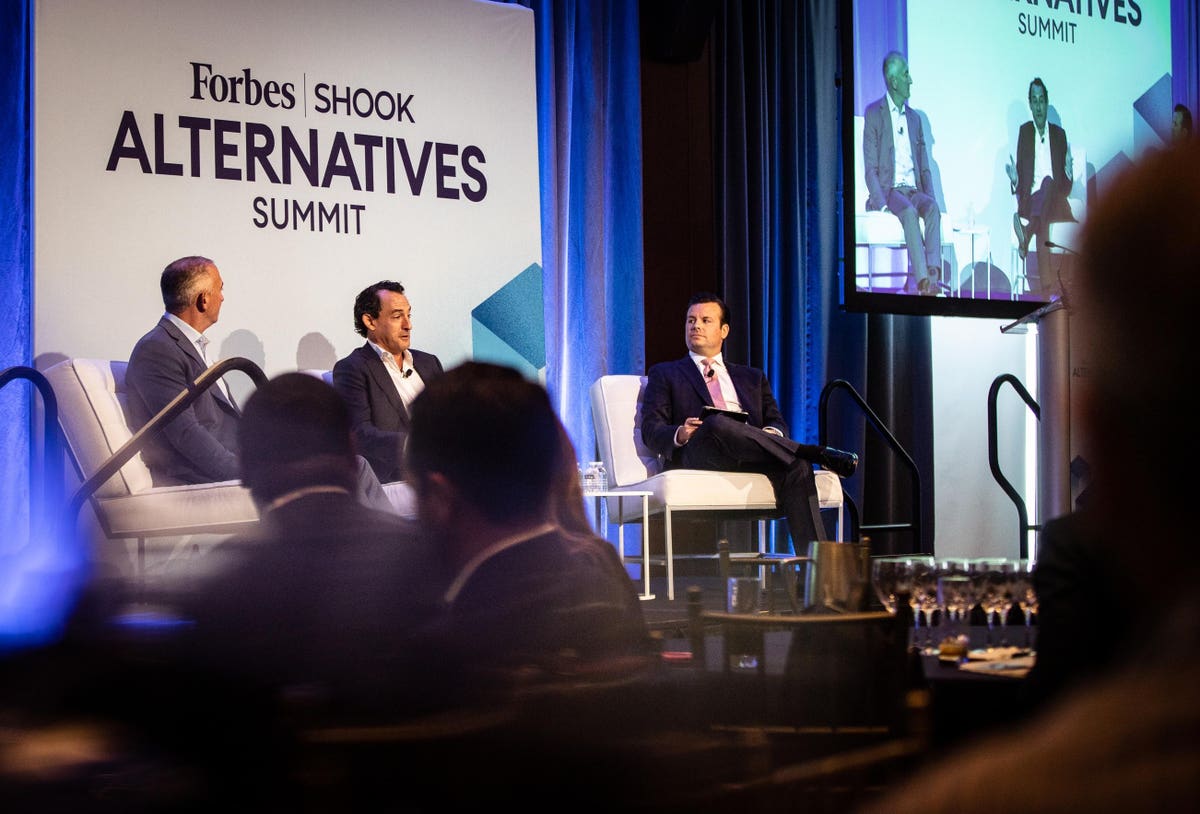Investors willing to risk cash in the face of rising interest rates and a weakening economy can take advantage of opportunities away from the stock and bond markets, money managers said at an alternative-investing conference in New York on Monday.
“We’re in a period of high volatility and uncertainty—generally asset pricing reflects that and it’s hard to borrow money to buy things, but that has also brought attractive valuations in areas like private credit,” said Jonathan Gray, president and chief operating officer of Blackstone
BX
Speaking at the 2023 SHOOK Alternatives Summit, Gray predicted a gradual economic slowdown as inflation slowly eases its grip.
Along with the Blackstone COO, various wealth managers remained upbeat about the opportunities to be had in alternatives, with several identifying specific opportunities in areas like private credit, secondary private-equity funds and infrastructure.
“Markets are generally worried about the broader economy—the S&P 500 may be up this year but a lot of that is due to outsized performance from a handful of big names,” said Scott Kleinman, co-president of private equity giant Apollo Global Management
APO
Traditionally success in private equity relies on loose liquidity and an upward trajectory for corporate earnings—but with neither of those present in the last year, deal volume has come down. Still, the impending wave of re-financings brought about by higher interest rates brings a host of interesting opportunities, especially in terms of finding new ways to creatively structure and fund deals, Kleinman added. “There is a fundamental secular shift but also a windfall profit to be made.”
With banks pulling back on conventional credit, that means big opportunities for alternative lenders, who can earn solid returns on their investment. “Credit is going to be a very interesting area for a while,” predicted David Levi, head of Brookfield Oaktree Wealth Solutions & CEO of Brookfield Public Securities Group. He expects money managers to be allowed flexibility in their choice of investments.
“It’s the ability to quickly pivot from public to private and giving that ability to clients,” added Levi. He noted that there are also significant opportunities in infrastructure finance for those who have the ability to deploy capital.
“We’re in what we believe to be a powerful bear market rally, but we’re about to go into the greatest liquidity suck of all time,” warned Troy Gayeski, chief market strategist at FS Investments. It’s going to be much harder to generate returns with vanilla assets, he added, while alternatives can offer high yields with less risk, making them ideal for this environment, he added. “Having dry power is critical in order to take advantage of this liquidity vacuum and move the needle on portfolio returns.”
Meanwhile, Scott Nutall, co-CEO of $500 billion private equity giant KKR
KKR
With banks pulling back on lending and less competition from companies tapping the stock and bond markets for funding there are significant opportunities in private credit, infrastructure and real estate lending, Nutall said.
“It’s really about allocating to truly diversify the stock and bond component of a portfolio and getting access to something we can’t get in the public markets,” said Adam Epstein, an advisor with UBS Private Wealth Management. He identified private credit, secondary private- equity funds, infrastructure and hedge funds, especially those that are not closely correlated to conventional markets, as key areas of opportunity that his team is investing in.
“There’s no bad time to do private credit or secondary private=equity funds,” David Berdon, an advisor with Morgan Stanley Private Wealth Management, similarly contended. Offering roughly the same returns as equities over the past 18 months—but with much less risk, private credit is solidly back in favor with wealth managers, he added. He’s also a fan of investing in private infrastructure: Not only is it resistant to inflation, but it adds diversification to existing fixed-income portfolios.
“Direct lending feels very risky in this environment,” echoed Richard Zinman, an advisor with Morgan Stanley Private Wealth Management. In addition to private credit, he also emphasized turning to more secondary private-equity funds and co-investment opportunities as a way to shield from downside. Alternative strategies “are a great fit for investors because they help protect them from themselves—the behavioral finance aspect gets taken out of the equation,” he said.
Several advisors also discussed the negative sentiment in commercial real estate, with fears of a slowdown especially as economic growth slows. With equity markets down last year and real estate values up, many people were over-allocated and have been pulling back, which slows demand for the asset class, according to Bert Crouch, head of North America at Invesco Real Estate. While commercial real estate has been beaten up quite a bit, there are now opportunities to be had, especially with trends still positive relative to long-term averages with growth year over year, Crouch said.
Read the full article here













